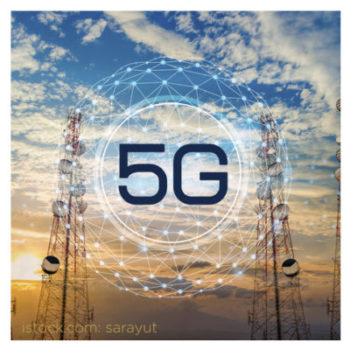Two years after launching its Startup 5G project, Ericsson has announced its first operator partner. Rogers Communications said last week it is joining the program in order to “explore leading-edge offerings” for its customers.
Ericsson’s Startup 5G was created to introduce carriers to innovators in consumer technology that can help them monetize the 5G networks they’re spending billions to build. Some of those billions of course go to Ericsson, so it makes perfect sense for the vendor to try to help operators commercialize these networks. Twenty different startups are part of its program, and they’ve created apps that directly target consumers, from virtual reality for trying on clothes to holograms that let people watch 3D concerts in their living rooms.
“I view this a little bit like a swarm of killer bees,” said Paul Cowling, director of industry analyst relations at Ericsson, speaking on a podcast about Startup 5G produced by the company. “There isn’t one killer app. There are lots of use cases that all build on the same platform and it’s that critical mass of individual use cases, when you put them together, that brings benefit.”
So far, getting people to pay more for 5G has been hard for carriers. Analyst Nicole McCormick, Omdia’s practice lead for broadband and multiplay, has reviewed 5G plans from more than 100 global operators, looking at efforts to monetize 5G. She calls the most successful strategy bundling “5G rich apps,” such as 3D children’s books, and upselling the service to subscribers. McCormick found about 22 percent of operators with 5G networks are bundling apps that are enhanced by the networks.
But there hasn’t yet been an independent application so compelling that consumers around the world seek out 5G in order to use it.
Leonard Lee, founder and managing director at neXt Curve, thinks applications that change the economics of 5G are unlikely to originate with the carriers. He points to the example of apps like Facebook and maps that drove LTE adoption. Both of those were already available on computers, and people wanted LTE so they could use them on the go.
“So the big question is: What is that next thing that already exists that can take advantage of 5G,” said Leonard. “We are not seeing it because we subscribe to hypotheticals that are not well grounded.”
Leonard sees plenty of infatuation with technology that can leverage 5G, and with applications that consumers love, but less analysis of the intersection between these.
“We look at it from a business perspective but we don’t take it down to the technology to validate what’s possible, what makes sense, where 5G actually technologically is differentiated,” he said, pointing out that many indoor applications can be handled by WiFi 6 as effectively as by 5G.
“At the end of the day it is all about ROI,” said Leonard. “I think there’s a difference in demand shaping … and then monetizing the 5G network.”
Monetizing the 5G network is what carriers need to do, and they will find ways, Leonard predicts. Rogers’ partnership with Ericsson could be a step in this direction, especially since some of the startups in the program are working on extensions of applications consumers have already demonstrated a willingness to pay for, such as eSports streaming.
Of course, carriers also have major 5G opportunities outside the consumer space. The 5G standard was developed with enterprise users in mind, and designed to connect a range of devices beyond smartphones and tablets. In addition to Startup 5G, Ericsson also sponsors a program called the D-15 Lab to support innovation for enterprise use cases. Some predict that the killer app for 5G will have little to do with consumers.
Others say the killer app for 5G has everything to do with consumers and is here already.
“The 5G smartphone is the first killer app of the 5G era,” T-Mobile CEO Mike Sievert said recently on the carrier’s Q3 earnings call. “From video calling, which has taken off as a primary means of communication, to TikTok and mixed reality and emerging metaverse applications, T-Mobile’s network is unlocking a differentiated smartphone experience in this industry today.”
Differentiated, yes, but not premium. Currently, T-Mobile’s top tier unlimited customers pay no more for the 5G experience than their friends on the Verizon and AT&T networks pay for a mostly LTE experience.
Veteran telecom industry editor and journalist Martha DeGrasse is an Inside Towers Contributing Analyst with features appearing twice per month. DeGrasse owns Network Builder Reports and contributes regularly to several publications. She was formerly a writer and editor with RCR Wireless and a TV business news producer.
By Martha DeGrasse, Inside Towers Contributing Analyst





Reader Interactions